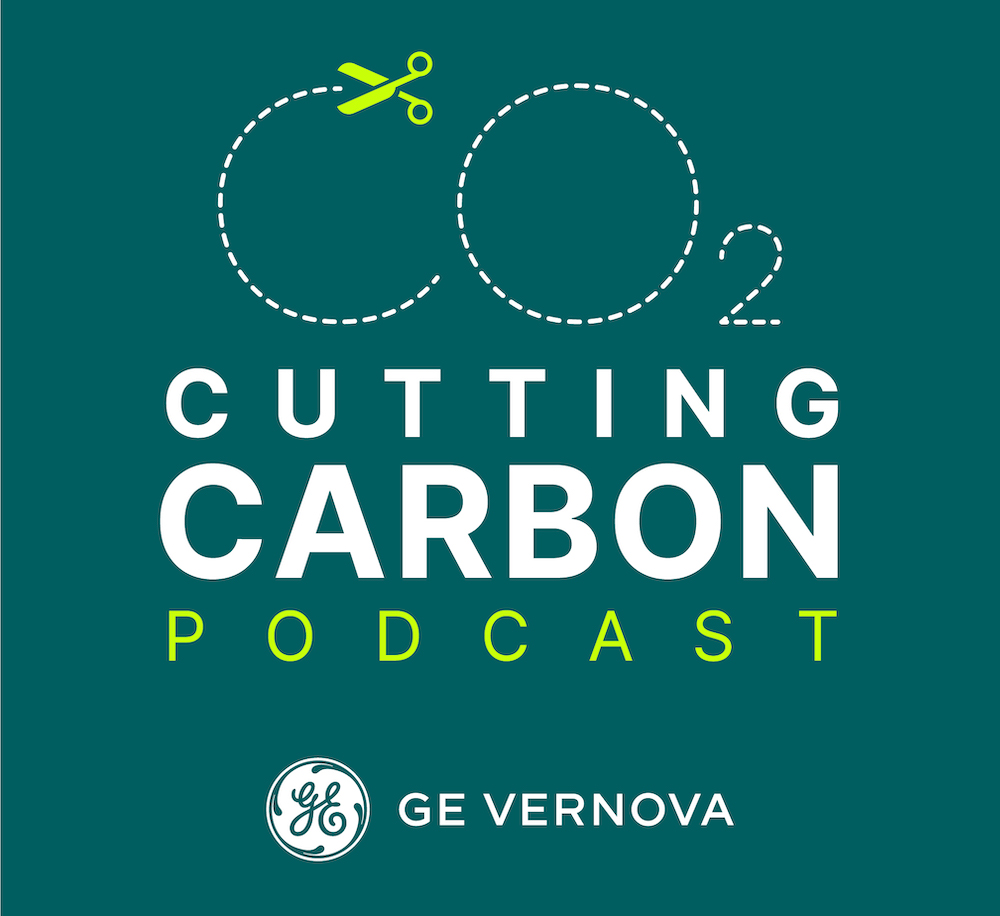On December 4, 2020, Brian Gutknecht, strategic marketing leader at GE Vernova, coined a memorable phrase to describe the era-defining topic of climate change. “It’s the ‘everything, everywhere’ problem,” he explained on the first episode of Cutting Carbon, the GE Vernova podcast that launched that year.
His words have proved to be prescient. Over the past three years, global awareness about climate change and the collective sense of urgency over the issue have sharpened considerably. Media coverage of climate-related anomalies and events, such as warming oceans, North American wildfires, and Asia’s fierce cyclone seasons, almost doubled between 2017 and 2021. Three out of four people in major countries in North America, Europe, and the Asia-Pacific region now believe that climate change is the top global threat.
In that time, GE Vernova, whose technology base helps generate approximately 30% of the world’s power, has established itself as an authoritative voice in this animated global conversation. Cutting Carbon, which is co-hosted by Gutknecht and Jeff Goldmeer, aka GE Vernova’s “fuel guy,” has just debuted its ninth season. Over 58 episodes, the duo have informed, educated, and entertained on every aspect of the path toward decarbonization, the technologies behind it, why it matters, and how the world can implement these technologies and strategies in power generation.
Electrification Trilogy
Season 9 takes that ball and runs with it. Launched on January 24, it’s the third in a trilogy (including seasons 7 and 8) covering the roles that digital and electrification will play in the energy transition. The first installment (episode 54 in the series) kicks off with Scott Reese, the chief executive of GE Vernova’s Digital business, who explains why software is crucial to that transition. For one thing, he says, it can solve the “computable problems” of matching power demand to available renewable capacity.

“We can forecast the weather,” says Reese. “We know the wind patterns and the thermal patterns of the sun. And we can forecast that against demand and be able to compute the demands and the loads — and be able to more effectively match supply and demand.”
This ability is enhanced by artificial intelligence. “AI plays directly into a computable problem,” says Reese. This was the logic behind GE Vernova’s recent acquisition of Oslo-based Greenbird Technologies. “That was all about connecting to the data sources,” he notes, “where you have a federated view out into the entire grid and the entire ecosystem that you need to ultimately orchestrate.”
Philippe Piron, chief executive of GE Vernova’s Grid Solutions and Power Conversion businesses, picks up on the same theme in episode 55. He defines a grid as a network that allows for the “evacuation” of electricity from power plants, whether they’re wind farms, solar panels, hydropower dams, or facilities that burn fossil fuels. He’s chosen the word carefully. The grid’s enabling ability is “very, very critical to the energy transition, because at the end of the day it is the end use which helps ensure decarbonization is working.”
Adds Piron during his second appearance this season, in episode 57: “This conversion of power from different energy [sources] is key. What’s the use of ‘clean’ energy if you’re not capable to transmit it like we’re doing with grid, and to transform it for the final end use?”
Solving the Conversion Conundrum
Episode 56 gives listeners a ground-zero perspective of one of the major challenges of zero-carbon energy production and greater electrification: power conversion. Gutknecht and Goldmeer interview Prakash Chandra, the head of GE Vernova’s Solar and Storage Solutions business, who explains why solving the issue will accelerate growth of the solar industry. “Take a photovoltaics (PV) plant,” he says. “You’ve obviously got the PV modules, you’ve got the sun shining on the PV modules, you’ve got direct current (DC) being generated there, and that needs to be converted to alternate current (AC) for it to be transmitted across.”

Chandra explains that GE Vernova offers generators a one-stop shop for their solar power conversion challenges. “We offer what we call the solar power island, which is pretty much all of the power equipment that goes in the plant,” he says. “We can offer that with financing, and any asset that’s out there needs controls and software.”
Trilemma Solving
Wrapping up season 9 is Heather Chalmers, the president of growth markets on GE Vernova’s strategy team and president and chief executive officer for GE Canada, who reminds us in episode 58 that decarbonization solutions still need to balance the traditional trilemma of energy reliability, affordability, and sustainability. Here GE Vernova can help shore up every side of the triangle.
GE Vernova’s scale and technology-agnostic outlook put it in a privileged position with governments and businesses that are aiming for net zero, explains Chalmers. “There is a level of trust and a level of collaboration that we can have with those key stakeholders that I think others can’t,” she adds.
Decarbonization Strategies for Sustainable Change
A typical episode runs between 15 and 30 minutes and often consists of an interview with an academic, a technology expert, or an industry luminary about the path toward decarbonization. Highlights in the archive include Robert Gleitz, a board member of the Nant de Drance pumped hydro plant in the Swiss Alps, explaining the crucial role of storage in the energy transition, and Carlos Haertel, who at the time was the chief technology officer of Climeworks AG, outlining the potential of direct air capture to reverse climate change.
Other episodes are like mini-seminars, allowing Gutknecht and Goldmeer to walk listeners through the seven colors of the hydrogen rainbow or hold jargon-busting sessions that outline the differences between carbon neutral, carbon negative, and zero carbon.
Learn more about GE Vernova’s Cutting Carbon podcast here and catch up on previous episodes here or wherever you listen to podcasts.
